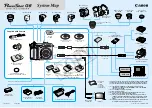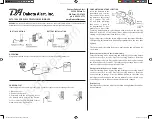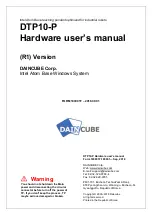
4-26
Chapter 4
Business Features Package
Voice over IP (VoIP)
The MGI3 VoIP card supports voice calls over an IP network connection using the industry
standards-based H.323 protocol. The card fits into any universal card slot in the Basic KSU.
VoIP is transported by the MGI3 card using the ITU standards-based H.323 protocol. This
standard addresses the means of transferring voice, data and images through IP (Internet
Protocol) networks.
With VoIP, certain compression standards have also been adopted to represent each second
of voice with an amount of bandwidth. The MGI3 uses G.711, G.729A or G.723 standards
voice compression codecs. This allows for a selectable 64kbps, 8kbps or 6.3kbps bandwidth
when preparing voice compression for IP transport. Compression is used to reduce the digi-
tized voice into a smaller bandwidth that can be carried in smaller packets.
The MGI3 H.323 gateway determines the compression method for each call setup. There is
also a certain amount of frame/packet overhead in each compression channel. 64k of band-
width can nominally support 6–7 calls simultaneously. This can vary depending on efficiency
features like Silence Suppression and multiframe counts. Unlike switched networks, VoIP
connections consist of a sequence of numbered data packets. Since voice conversation is
usually considered "real time" these packets need to be delivered in a consistent manner
with minimal delay. This can be controlled via a Gatekeeper which tracks and monitors voice
packets. Gatekeepers are part of the H.323 standard but are not mandatory. The MGI3 is
Gatekeeper compliant.
In any Ethernet environment, packet transfers are subject to delays and/or loss. If these de-
lays are greater than 200ms the voice quality will deteriorate. The Ethernet data traffic and
network topology should be a consideration when applying the VoIP feature. Network con-
gestion affects call quality in any VoIP application.
Walking Class of Service (WCOS)
This feature allows users to make calls or use features from a station that is normally re-
stricted. The feature is similar to the Authorisation Code feature. Both methods change the
class of service to correspond with the station passcode or authorisation code that is dialled.
After the call is completed, the station returns to its programmed class of service.
Содержание OFFICESERV 100 Series
Страница 1: ...OfficeServ 100 General Description Enterprise IP Solutions ...
Страница 11: ...OfficeServ100 1 3 Figure 1 1 OfficeServ 100 Basic Key Service Unit ...
Страница 78: ...4 42 Chapter 4 Business Features Package Sample SMDR Printout ...
Страница 90: ...Samsung Business Communications Brookside Business Park Greengate Middleton Manchester M24 1GS ...
















































